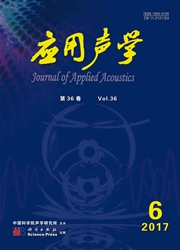

 中文摘要:
中文摘要:
为了提高超声换能器频率跟踪的稳定性,通过对最小电流法和相位差法的原理和应用范围进行分析,提出了基于最小电流和相位差法相结合的并联谐振频率跟踪策略,该策略主要思想是将最小电流法运用于换能器空载阶段,相位差法运用于带载阶段,并且带载时的起始驱动频率取为空载阶段跟踪到的并联谐振频率。由此对最小电流法和相位差法这两种跟踪方法进行取长补短。基于该跟踪策略对换能器在不同负载下进行了实验,结果表明该策略可以快速地跟踪到换能器的并联谐振频率,并且工作稳定。
 英文摘要:
英文摘要:
In order to improve the stability of ultrasonic transducer frequency tracking, the principles and application ranges of the minimum current method and the phase difference method are firstly analyzed. And then a strategy which combines the minimum current method and phase difference method to track the resonant frequency of the parallel is presented. The main idea of the strategy is that the parallel resonance frequency is founded with the minimum current method when the transducer is unloaded and the frequency is tracked with the phase difference method when it is loaded. And the start frequency when the transducer is loaded is the frequency founded when the transducer is unloaded, thus the two methods are combined. Specific steps of implementation are given at last. Experiments on the transducer under different loads are made based on the strategy. Results show that the strategy can make the parallel resonance frequency be tracked fast and work stably.
 同期刊论文项目
同期刊论文项目
 同项目期刊论文
同项目期刊论文
 期刊信息
期刊信息
